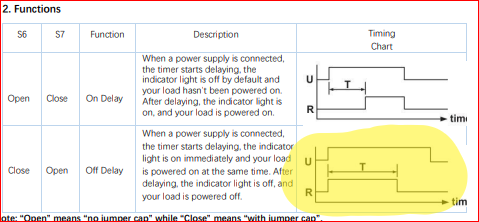I have a gate release solenoid that can be high for no more than 0.2 seconds according to the specifications. I have a timer to attach to it so the gate is released at a preset time. However, the minimum duration of the ‘high’ signal is 1 minute; just slightly longer than the maximum 0.2 seconds!
I’m chasing some help in designing a circuit that will limit the power to 0.2sec. Any suggestions?
What is the voltage and current for the solenoid (a picture, with the label would help), and what voltage/current can the timer supply?
A 555 timer can supply a single 0.2s or whatever ‘on’ signal when triggered by a low-high (or vice versa) trigger, such circuits are common. The hard part is supplying and switching the correct current and voltage to the solenoid.
These are the gate latches: Buy K01 12V Dc 2A Electric Magnetic Intelligent Cabinet Door Lock Fail Secure With Manual Unlock Handle - MyDeal
The timer is here: CN101A Electronic Timer Switch Portable Round Time Relay for Home Tools (12v) | eBay
Operates on 12V battery.
So you pulse this lock (apply voltage) and it opens and pushes the latch out of the lock?
You have to push the latch into the lock to relock
When the power is off the lock is engaged.
Where did this spec come from? I read the below as 5S max pulse time
Specification:
Model: K01
Locking Type: Fail Secure
Rated voltage: DC 12V
Rated current: 2A
Locking Force Hook: 150kg
Maximum Continuous Lighting Time: 5s [weirdly written, is this the max on time of the unlock pulse]
Working Environment: - 40 to 60�b?br /> Solenoid Life: 0.5 million times at rated working conditions
Cable Length: 170mm
Suitable for: 0.5~4kg weight cabinet door
Size: Approx. 73×58×13mm
Are you having a problem with this lock’s operation with your current configuration, how is it acting?
This is from a different site… looks like pretty much the same info. Couldn’t find the manufacturer.
Ditto…
I think you’d need some external electronics with what I know so far…
![]()
Didnt dig into the manual on this but sounds like it would work.
Put it on the output of your timer.
71zXy5MJlgL.pdf (163.8 KB)
One trick we did for high speed solenoids was to hit a 12 volt solenoid with a 24 volt millisecond pulse. On one line we’re able to do this 2400 times a minute.
Yes, used to do that on high-speed paper sorters to get better opening speed.
In his case, he needs the on-time to be less than 5 sec. I don’t think he needs it to be fast though.
Yep, that’s right Don. I’ve found the sticker in the box with the 0.2 spec on it.
LatchSpecs.pdf (393.7 KB)
The latch works fine, however the minimum time that the timer is high for is 1 minute. I’ve tried adding a capacitor that counters the power after the gate release, however having trouble getting sizing it and getting it to discharge sufficiently before the next pulse.
Correct Don. The spring releases the latch as soon as the solenoid is powered. My only concern is that the up time might burn the solenoid out prematurely.
This could work OK I think. So I should be able to set it so after receiving power from the timer, it delays for 59.8 seconds before passing the power to the latch? Thus only giving the solenoid a 0.2sec pulse before the timer drops power.
Think your user will want to stand there minute before it opens?
![]()
I guess they can just set the timer one minute early ![]()
![]()
No, my thinking is that the second timer provides an on pulse that is .2 sec long after the CN101A timer fires.
The specs for the time delay timer say that it has adjustable duration from .1s to 1 hr.
Use the second configuration in this drawing. I would set it to 1 second I don’t imagine that will do any damage.

How often is this opened?
All good, it’s a gate opener for cattle! They’re more patient than people ![]()
The release will only be a coule of times a week, so pretty low frequency.
